#ethnic folkways
Explore tagged Tumblr posts
Text
MASH S5. ep .12. Exorcism

The priestess is a mudang shaman. Her attire and dance are real. My guess is that she wasn’t credited because she was not an actress. Southern California has many Koreans who follow the ancient ways and it’s not implausible that they asked permission for a real one. Her dance is probably a dodanggut which removes evil spirits and protects a community (and would be appropriate to bless the set where M*A*S*H was filmed in reality, not just the compound in the show).
Klinger might be interested in the fact that these shamans cross-dress because they embody both male and female deities. I would love to know what inspired Jay Folb to write this episode, which covers the folkloric link between what we think of as superstitions and traditional beliefs.
Bluejay Young blog reply on MASH4077TV.COM which is a greatly helpful add-on to the site post.
Credit this ep for my lifelong study of comparative religions. Each plot event and dialogue in it is a teaching and learning point with absolutely nothing wasted.
#shaman#mash#further thinking about plot clues#media studies#superstition is not inside a belief system#not wrong just not yours#ethnic folkways#korean
178 notes
·
View notes
Text
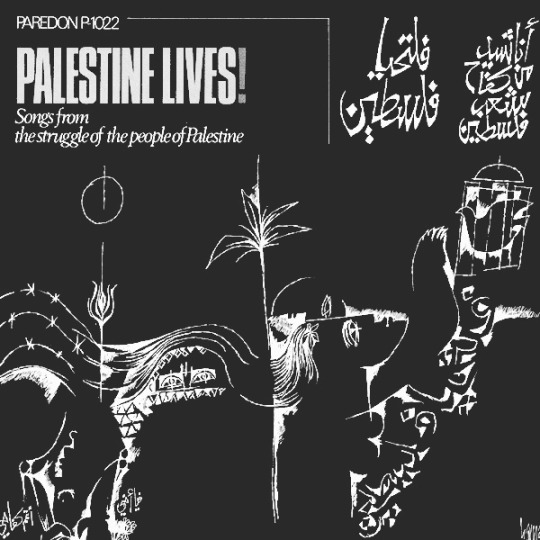
Currently Playing
Smithsonian Ethnic Folkways Library PALESTINE LIVES! SONGS FROM THE STRUGGLE OF THE PEOPLE OF PALESTINE
16 notes
·
View notes
Text
White Americans not realizing they have a culture and an ethnicity (calling only people of color "ethnic," or only minority traditions "cultural") is a lot like cis people denying that they have pronouns!
It's another example of people in the majority thinking of their own demographic as normative (expected, default, the unmarked category). It's so deeply ingrained that it becomes invisible.
'White Americans don't have any culture, they're just [normal/boring/generic/empty]. 'Culture' is when you're quaint and exotic and have interesting ethnic foods and holidays." is such a grating bit of nonsense to have somehow become progressive commonsense in a lot of places.
#culture#race#ethnicity#america#whiteness#traditions#folkways#social issues#gender#pronouns#my thoughts
16K notes
·
View notes
Note
Was it piano playing from Myanmar i remember you posting about? I remember being very fascinated, it would be cool if you could share some of your favorite recordings.
Yeah, the Burmese tradition is one of the most interesting piano traditions for me because it developed with only scant reference to the European tradition. It’s gorgeous fascinating music. Unfortunately there aren’t really a lot of readily available recordings of it: i don’t think any new ones have come out since I first got into it. There are recordings on the compilations of Burmese music on Sublime Frequencies, there’s (as far as I know) the only major western recording White Elephants & Golden Ducks: Enchanting Musical Treasures from Burma (track 2), and some recordings on YouTube, but I haven’t found many more beyond that. Here’s one from a different Ethnic Folkways comp
and a video:
youtube
26 notes
·
View notes
Text
Some people get really into their genealogy and ethnic heritage around 30(?) as this last minute attempt to define themselves in a new exciting way, and… this is not for me. If you’re Palestinian, ok I get it. But I’m like German and Swedish. You don’t get to be proud of that. Especially because, at some point, my ancestors took the devils bargain of just identifying as White. No cuisine. No costumes. No holidays. Just white people being Americans. Boohoo for me? No. But in a fairer world where we like and respect people’s differences winning the lottery of being invisible by being unquestionably accepted is a poverty. Like men who can’t cook or sew or wrap gifts.
Subjectively, I feel left out a little bit. I feel like it is transparently stupid when people become racist chauvinists for whatever flavor of fascism is the vogue in their country of origin. Nationalists. Then there are people who are into their heritage and you want to affirm them and the folkways are neat to learn about and you’re happy when they can embrace them.
Sometimes you’ll get this insight where people will admit, it’s sort of anxious being trad…itional in this way, and it’s like, no shit.
Anyways. The new girl at work is getting really into her Jewish heritage and had a long conversation with Harper about Italy and Greece and she sort of eyed me like, Well what about you? And I basically said what I said above.
Later I thought about my great grandfather who was a Quaker, and that’s sort of a nice story to suture myself to. But the truth is, that’s about 4 sentences worth of information from my grandmother that could have been anything. My dad just invents wild things constantly based on what he feels true all the time. You should hear him explain songs on the radio, or, better yet, who he believes is the actor on any given TV show that’s playing right now from 60 years ago. My family should just be those people. Who’s to say that all those Germans in my family weren’t Poles? Or Don Knotts? Or James Arness?
5 notes
·
View notes
Text

ethiopian jewish music / ethnic folkways lp
1 note
·
View note
Text
“Religion is about community” = Tell me you view your religion as nothing more than an ethnic folkway you’re sentimentally attached to, without telling me.
And sure sucks for all those hermits various religions have, if religion’s about community…
People who say "religion is about community" drive me a special kind of crazy, because while community is often a side benefit, it's not why I go to church. I go to church because Jesus died for me specifically and loves me specifically and that dictates how I live my life in just about every area. Yes, the friends I make are awesome, but it's not just a fun little thing between those people and I'm not leaving my religion at the door.
495 notes
·
View notes
Text
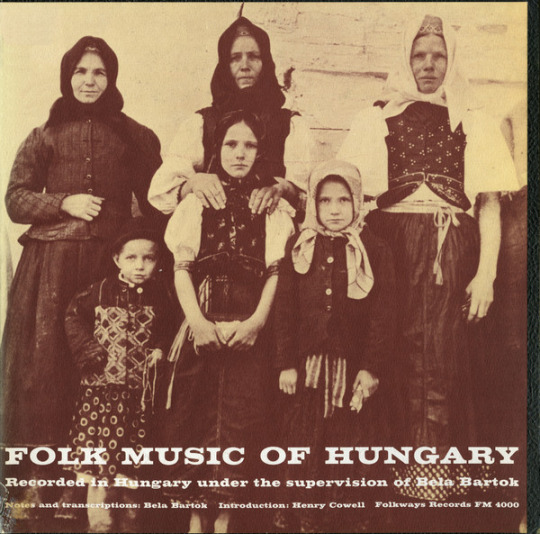
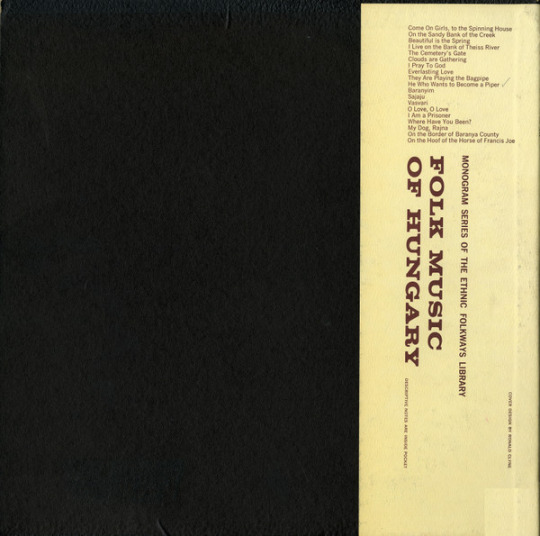
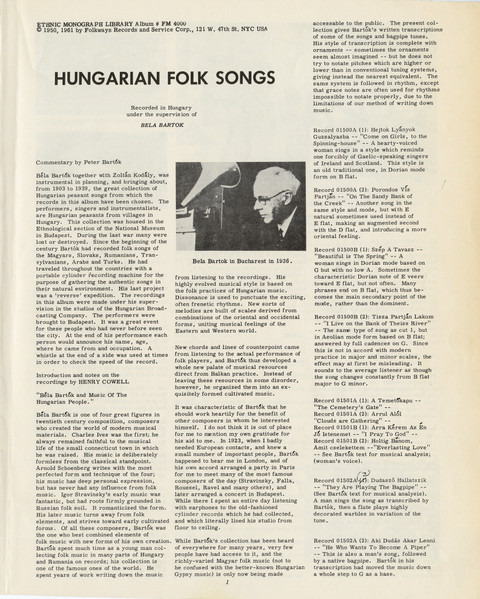

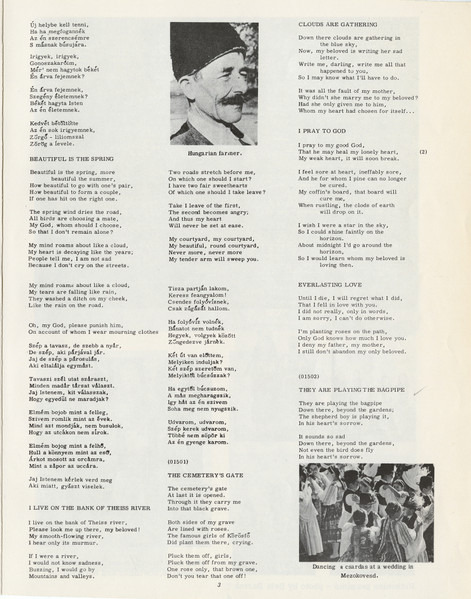
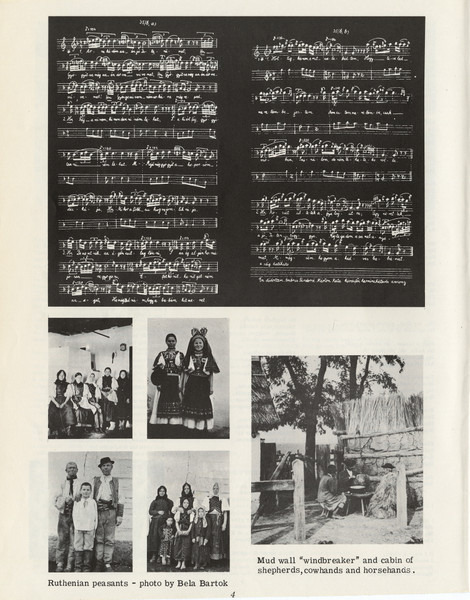
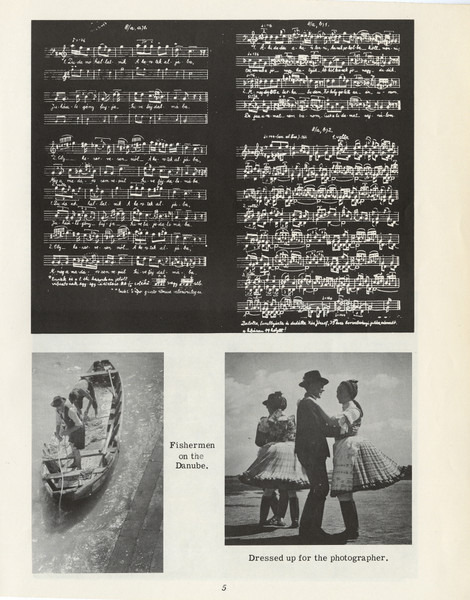
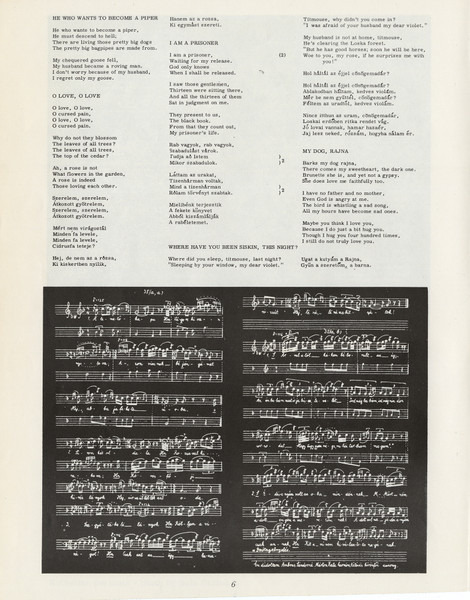
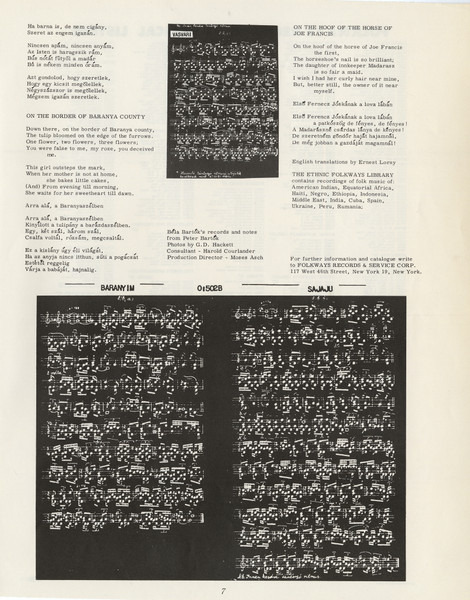
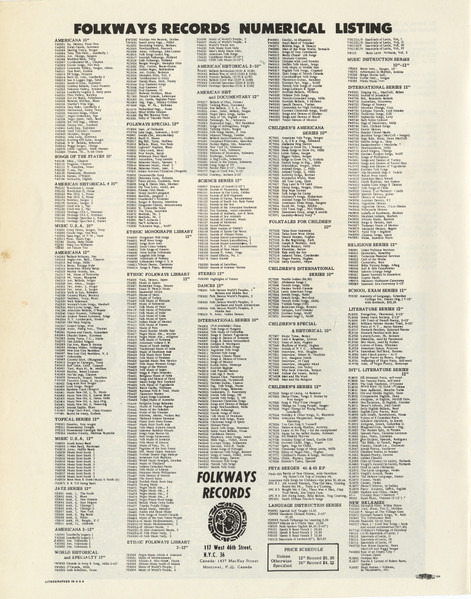

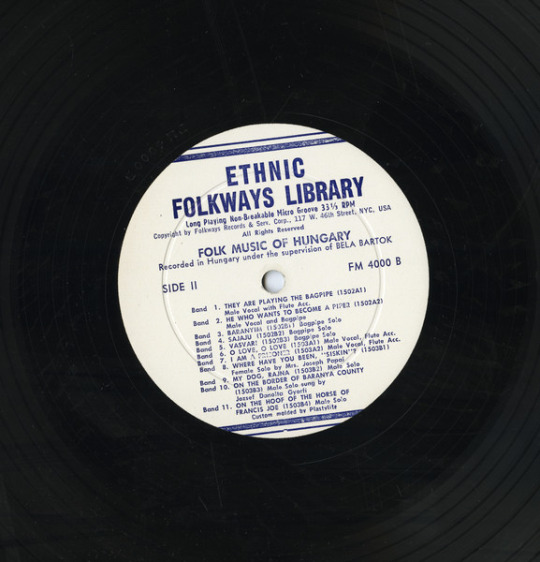
1961 reissue of the 1950 Folkways Records, ‘Ethnic Folkways Library’ release of Bela Bartok’s field recordings of the folk music of Hungary.
https://folkways.si.edu/folk-music-of-hungary/world/music/album/smithsonian
https://www.npr.org/templates/story/story.php?storyId=14416746
https://arbiterrecords.org/bartok-exploring-transylvania/
https://www.npr.org/2009/05/06/103733863/bartok-from-the-fields-to-the-concert-hall
https://www.cpr.org/2016/03/29/listen-how-bela-bartok-turned-folk-melodies-into-classical-masterworks/
https://stringsmagazine.com/how-bela-bartok-redefined-classical-music/
#history#vintage#field recording#bela bartok#folk music#hungary#folkways records#ethnic folkways#vinyl record#1950s#1950#1960s#1961#ethomusicology#musicology#traditional music#music history#link#website#npr#radio#arbiter records#cpr#strings magazine#articles#writing#vinyl records
7 notes
·
View notes
Video
youtube
youtube
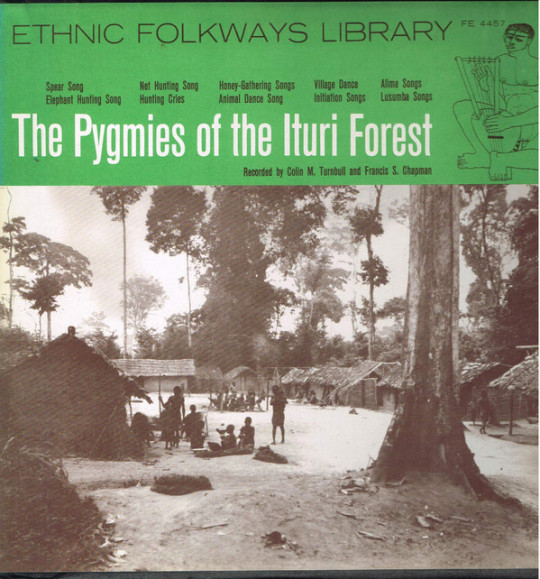
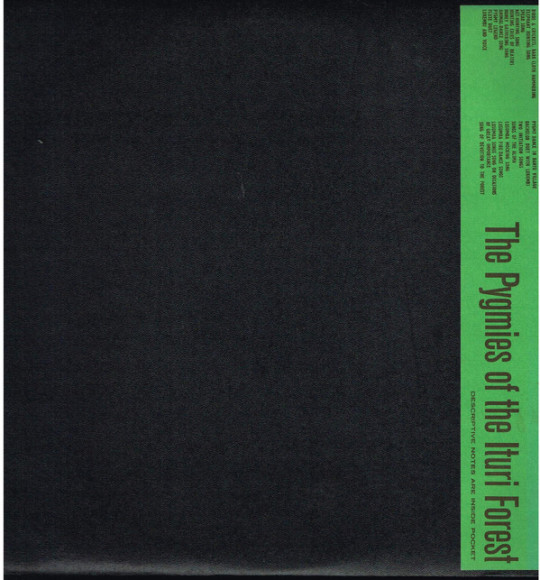
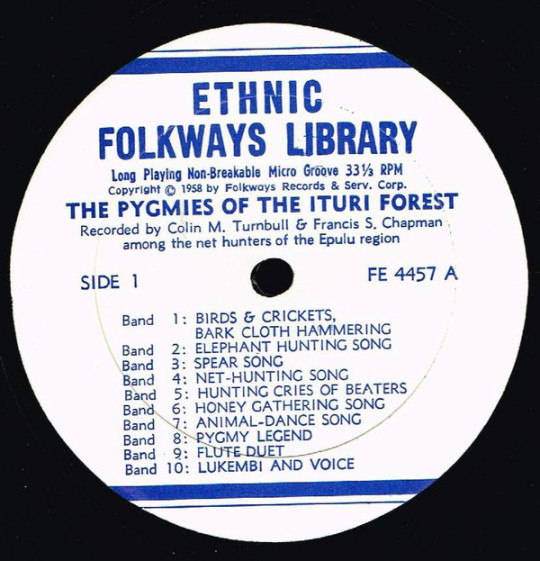
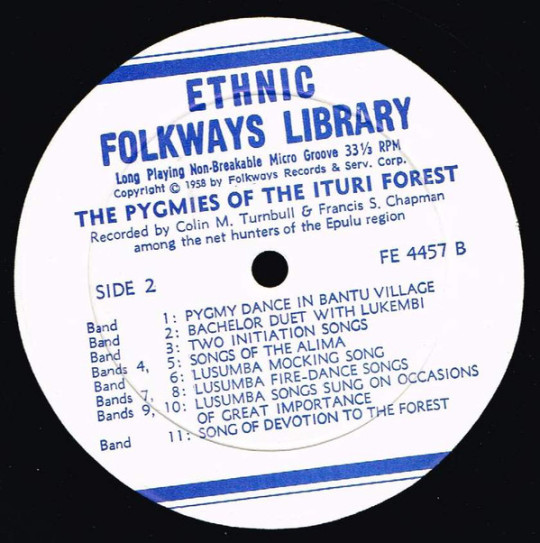

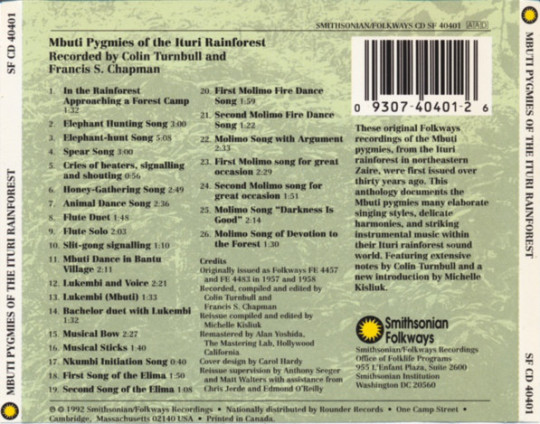
Mbuti Pygmies Of The Ituri Rainforest - Bachelor duet with Lukembi Mbuti Pygmies Of The Ituri Rainforest - Pygmy Dance In Bantu Village from Mbuti Pygmies Of The Rainforest (Folkways, 1958)(Ethnic Folkways Library / Folkways FE 4457) Recorded By Colin Turnbull And Francis S. Chapman
also Mbuti Pygmies Of The Rainforest (Smithsonian Folkways, 1992)
****************************************************************************************
Mbuti Pygmies of the Ituri Rainforest captures the variety and tonal quality of the solo and choral traditions present in Mbuti vocal music. Songs are primarily concerned with Mbuti's nomadic life and the forest, from which their lives and those of the animal kingdom are sustained.
#1950s#africa#congo#pygmies#mbuti pygmies#folk#world#tribal#tribal music#ethnic#ethnic music#ethnomusicology#traditional#traditional music#smithsonian folkways#fieldrecording#colin turnbull#francis s. chapman#music#music blog
3 notes
·
View notes
Photo

1 note
·
View note
Text
I'm especially irritated at the person who said "So when I hear, ‘We were here first.’ I say, ‘You’re very lucky we were here second, because we could be studying you like the dinosaurs.’ Most conquerors conquered everything. There was nothing left..." It's just factually wrong! Genocides are actually relatively rare, and completed genocides are even rarer. For one thing, it's often bad strategy, because it encourages your enemies to fight to the death. For another thing, the most valuable thing about a piece of land is usually the people and infrastructure on it. Leaving the conquered alive but completely destroying their culture is also unusual, because, like physical genocide, cultural genocide is an enormously resource-intensive project and it's much easier to just subjugate and tax the conquered instead. The usual pattern is that the conquered get subjugated, taxed, and forced to perform various rituals of submission, but get to stay alive and still mostly practice their own religion and folkways, because that approach is much less resource-intensive than trying to completely rewrite their culture or trying to kill them all and replace them with your own settlers.
Like, has this person noticed that England, Italy, and Egypt remained culturally and ethnically distinct after the Roman Empire conquered England and Egypt? Have they noticed that Greece and Egypt remained culturally, ethnically, and religiously distinct after both of them were conquered by the Ottomans? Have they noticed the ancient Egyptian religion was still going strong in the early Roman period despite Egypt being serially conquered before then (by Persians, Greeks, etc.)? Have they noticed that the Soviet ethnic satellite republics were a thing - they can't claim that the Russian Empire had any democracy-inspired respect for subject peoples! This person's view of history is easily falsified by being able to apply basic logic to the sort of information you find in K-12 history and geography textbooks, the evening news, and Wikipedia.
IMO a less bad "you're very lucky we were here second" argument would be "at least with us you ended up with liberal political rights, modern medicine, and TVs; you might have ended up agricultural serfs toiling away on some Templar Knight's manorial estate, in a society with mostly basically Medieval technological, social, and political conditions." Of course, "be grateful we were here second" is a fundamentally bad argument: it's classic abuser logic: "somebody else might have treated you even worse, so be grateful we didn't do that." Somebody who punched you in the face did something bad to you even if somebody else might hypothetically have hit you harder. American native peoples are right to resent the way the USA has oppressed them and press for improvement of their conditions even if Almohad warlords or whatever might hypothetically have oppressed them even worse.
I guess this is kind of a weirdly pedantic thing to focus on, but the rest of "yeah, these 'anti-Indian' groups sound like really shitty people" is so obvious there's not really much to say about it besides, well, "yeah, these 'anti-Indian' groups sound like really shitty people."
...This article I link to is interesting because, a lot of folks talk about anti-native policies as more the uncaring wheels of capitalism/imperialism with more institutional bigotry driving it.
But I haven't heard a lot about groups that actively and specifically target indigenous nations and their rights to hose, to the point of being basically hate groups, and the linked article shows that apparently that's a pretty big problem!
And I felt it was worth getting the word out so more folks know about these fuckers so they can be fought.
Especially given that the reason I found this out was because it was linked in this article talking about these bastards being behind a Supreme Court case that will probably majorly fuck over sovereignty for the native nations, which we should all be keeping watch on...
31 notes
·
View notes
Text
Sociologies Four Basic Concepts
As promised some important notes from sociology class that I think could be pretty useful for helping uncomplicate deduction. So one of the biggest problems I’ve run into is I keep naturally wanting to overcomplicate my deductions or I just don’t know where to start. With deduction as with almost anything you start with a baseline and for me, it only makes sense to start with the baseline of how people interact with the world, thus the five basic concepts of sociology.
Some Important Terms to Know
Manifest Functions: These are things done with an open/clear/public/honest/intended/expected intention
Latent Functions: These are deceptive/illegal/unethical/hidden/secret/manipulated/unintended responses
Margin of error is used to account for latent responses
Lie is defined as calculated deception
Four Basic Concepts and Their Subtypes
Norms
Formal Norms – Written, posted, or published (Speed limit, pool rules, no smoking signs)
Informal Norms – Assumed to be understood, unwritten (wash your hands after the restroom, waiting in line, take a shower, use your turn signal)
Ideal Norm – Perfect sense of self, what people say they would do (“Yes of course I would turn in a lost wallet to the police.”)
Statistical Norm – Measured or observed norms (FAKE STATISTIC FOR EXAMPLE ONLY: 67% of people were proven to steal money from the wallet before turning it into the police)
Prescriptive Norms – Appropriate behaviors for situation or circumstances, often set firm (Uniform you must abide by, not giggling at a funeral)
Proscriptive Norms – Inappropriate behaviors for situation or circumstances (Cussing out your Grandmother, chugging communion wine)
Mores (More-Ray) - Moral and ethical musts (think the ten commandments, not drinking and driving, reporting abuse)
Mores affect and are based around people, property, and the well-being of the public
A common example of mores is laws
-People: Murder, Robbery, Assault
-Property: Arson, Vandalism
-Well-being of the public: Disturbance of the peace, Shouting fire in a theater, driving drunk
Folkways – Customs and traditions unique to your religion, community, tribe, race, and ethnicity
There’s folkways specific to your group like your family or friends such as opening one present on Christmas Eve or playing secret Santa. Then you’ve got traditions specific to your race, ethnicity, or religion, like traditional clothing at weddings, Hindu brides having mehndi on their hands and feet, Muslim women wearing hijabs, Catholic mass, etc. And community specific traditions like Oktoberfest or pride parade. This is of course not a complete list but you get the idea
Values - Are our desires and they can be separated into Individual and Collective values
Individual Values
Trust, honesty, loyalty, money, power, fame etc.
Collective Values
Freedom, justice, equality, work ethic, healthcare for all etc.
So How Does It Relate To Deduction
Each of these four basic concepts allows us to examine differing and/or overlapping demographics in sociology, but why does that matter for deduction? Cade Maggie (@footprints-and-tea-stains) defines the bare bones baseline of Holmesian deduction as “The application of logic to study an observed event to learn the circumstances of another unobserved event using data points with the goal of understanding the transformation between said events.” If we can recognize our four sociological baselines, we can determine what kind of values, norms, folkways, and mores are typical for an individual or a group and where any deviations are and then we can break down what they mean. Some simple examples include wearing a yarmulke is a folkway for Jewish men, nails bitten down to the quip could be the norm for people with anxiety, finger tattoos could be indictive of people with values against the governmental/social/political norms, etc. There is always room for deviation (accounted for with a reasonable margin of error) but hopefully these starters give you a bit of a boost in making deduction a little less intimidating and helps you remember that there’s always a simple baseline you can start with if you’ve got no clue where to start.
-Graham
#deductive reasoning#deduction#Sherlock Holmes#Holmesian deduction#logic and deduction#logical reasoning#sociology#psychology
4 notes
·
View notes
Text

Currently Playing
Smithsonian Ethnic Folkways Library FOLK MUSIC OF PALESTINE
16 notes
·
View notes
Text
How One Woman Changed the Coffee Industry
Note: last year, I was invited to contribute a piece on the ‘second wave’ of coffee to the Deutsches Museum’s exhibit ‘Cosmos Coffee’. The following is the text of my contribution. Many thanks to exhibit curator Sara Marquart for the invitation.
* * *
In 1968, a professional secretary named Erna Knutsen took a job in a coffee trading firm in San Francisco. Part of her job was to maintain the “position book” in which accounting records were kept concerning the company’s coffee inventory and contracts with BC Ireland, a well-established coffee importer. Although born in Norway, Knutsen had grown up in New York City, a place where––like the rest of America––coffee had become the definitive everyday drink: ubiquitous, commonplace, ordinary. Though coffee’s origins are in Africa and the Middle East, and early European and American coffee drinkers recognized the deep cultural roots and special flavor of coffee, by the mid-twentieth century American enterprise had tamed the exotic coffeehouse and sanitized the smoky, brash coffee roasting companies. Coffee had become slick big business and, by the 1950s, coffee was a quotidian drink for most Americans, a commodity sold pre-ground in cans lining the shelves of polished, sterile “supermarkets.”
By the late 1960s, coffee was in trouble. Per capita coffee consumption had fallen steadily since the end of World War II and young people were rejecting sanitized commercial coffee brands as boring, tasteless, and square. Slowly, in the latter half of the 1960s, a different vision of coffee began to emerge in cities on the West Coast of the United States. Alfred Peet, an immigrant from the Netherlands whose father used to run a coffee roasting company in Europe, had worked in America’s coffee industry and found it lacking in quality and variety. He established Peet’s Coffee, Tea, and Spice in Berkeley in 1966. His shop liberated coffee from its steel cans and sold whole beans, scooped from gleaming brass bins into simple paper bags, alongside exotic teas and spices. Decorated with wood paneling and vintage coffee equipment, Peet’s evoked a nineteenth-century coffee aesthetic and was a rejection of the space-age modernism of the 1960s supermarket.
Soon, Peet was joined by others: in 1968 in San Diego, Bob Sinclair founded Pannikin Coffee Tea and Spice, which sold freshly roasted coffee alongside handmade cookware. That same year, after honeymooning in Sweden and experiencing a coffee epiphany, Herbert Hyman opened his first coffee store in Los Angeles, called the Coffee Bean. In 1971, Jerry Baldwin, Zev Siegl, and Gordon Bowker, three friends who met at the University of San Francisco and who were inspired by Peet’s vision of coffee, founded Starbucks in the city of Seattle, naming the company after a character in Hermann Melville’s classic novel Moby Dick. In 1972, Carl Diedrich, a German immigrant who arrived in the United States via Guatemala, established his own coffee company in Costa Mesa, California. George Howell, also inspired by Peet’s in Berkeley, brought the vision to Boston, founding the Coffee Connection in 1974. Before long, most urban metropolitan areas in the United States had their own small coffee company, dedicated to a common vision of quality coffee and freshness.
From her secretary’s desk, Erna Knutsen could see something unique was happening. These new, young, quality-oriented coffee companies were asking her for “special coffees.” They insisted on the very best quality, seeking out unusual varieties, historic origins, and meticulously prepared “lots.” Realizing that her bosses at the coffee trading firm thought of these new coffee companies as an annoyance, Knutsen began to focus on identifying these special coffees and presenting them to her audience of small, quality-oriented coffee companies, building a little side business. It was in an article she wrote for the Tea and Coffee Trade Journal in 1974 that she called this new market segment “specialty coffee.” In building her business and documenting the rise of a new generation of coffee companies, Knutsen was one of the first to identify what we now call the second wave of coffee––a group of coffee entrepreneurs who, in rejecting the norms of the commodity coffee business of the mid-twentieth century, created an aesthetic and a movement of their own.

Erna Knutsen at her desk.
The specialty coffee era emerged as America rediscovered gastronomy. Led by culinary enthusiasts like Julia Child and Craig Claiborne, a new movement helped Americans discover the regional cuisines of Europe, explore the ethnic diversity of food in the United States, and partake in the excitement of exploring food traditions from around the globe. In 1968, Child’s television show The French Chef was at the peak of its popularity, introducing Americans to the techniques and traditions of French cooking. New York Times food editor Craig Claiborne’s Kitchen Primer was published in 1972, introducing his readers to French, Italian, and Spanish cooking techniques, complete with instructions on brewing fresh coffee. This aesthetic of culinary technique, gastronomic exploration, and a do-it-yourself ethos created a fertile environment for entrepreneurs with a zeal for coffee, flavor, and cuisine. It should be remembered that many of these coffee companies sold spices, cookware, and books alongside coffee. This meant that coffee became central to a lifestyle that embraced good food and drink and the desire to cook “the hard way,” and eschewed the conveniences of frozen-food dinners and pre-ground coffee.
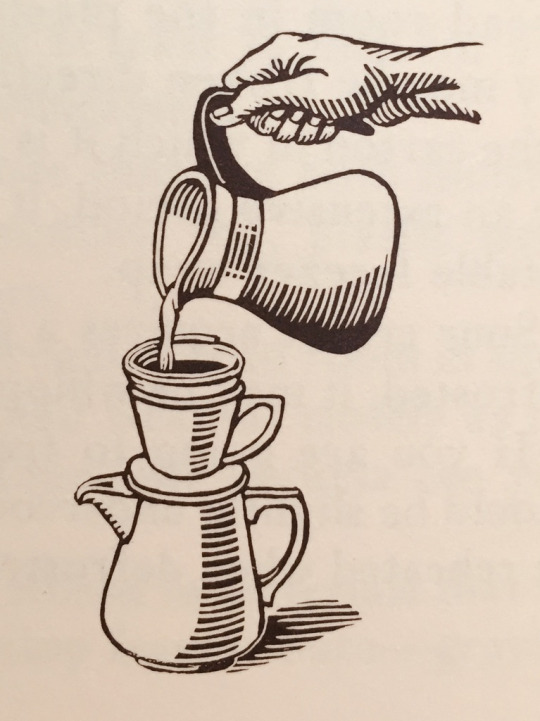
detail of coffee brewing in Craig Claiborne’s “Kitchen Primer” by illustrator Tom Funk, 1972
The second wave of coffee went hand-in-hand with a new sense of cultural exploration. The 1960s and 1970s were an era characterized by ethnic identity and pride, and specialty coffee companies incorporated cultural awareness – particularly of Latin America and the Pacific Rim––into their own identities. Royal Coffee and Knutsen herself sang the praises of Mandheling coffees from Indonesia, George Howell celebrated Huichol art, Pannikin integrated Mexican chocolate and indigenous Mesoamerican folkways into its company identity. All this exemplified these companies’ attempts to communicate and celebrate the cultures from which coffee was sourced. “Offering sheets” and newsletters from coffee importers circulated by post and by fax in the pre-internet era provided a critical education in the coffee trade to the widely-scattered companies of the second wave. Erna Knutsen’s missives, enthusing about the qualities of the coffees she traded, became legendary, as did updates from Royal Coffee and others. Second wave roasting companies from this period embraced the offering sheets aesthetic of the coffee importers and began to expose consumers to the language of the coffee trade, adding regional names like Guatemala Antigua and Ethiopia Harrar to coffee menus, alongside technical trading terms like “Kenya AA” and “Colombia Supremo.”
All of this was done in a spirit of cultural rebellion. Taking their cues from the back-to-the-land and bohemian movements of the late 1960s, second wave coffee companies embraced a style of rebelliousness and nonconformist business practices that came to typify the movement. Bob Stiller founded the Green Mountain coffee company only after the success of his first business, “E-Z Wider,” a company that manufactured rolling papers for use in smoking marijuana and was named after the seminal counterculture film Easy Rider. Paul and Joan Katzeff founded their company Thanksgiving Coffee as a “hippie business.” Although Alfred Peet embraced a conservative personal style, his shop in Berkeley became known as a countercultural hangout, and its regulars became known as “Peetniks,” after the Beatniks.
In the 1980s, these companies began to be embraced by the wider community, having already become well known to the culinary elites and bohemian subcultures of the cities they served. Individual, idiosyncratic outposts turned into local chains of retail stores, which began to host coffeehouses too. In 1982, the Specialty Coffee Association of America was founded. Erna Knutsen helped lead the way in providing a professional association that could assist with establishing standards and educating personnel at the companies participating in the movement.
In the tradition of the second wave’s celebration of European coffee style, Howard Schultz incorporated the Italian espresso bar aesthetic in his Il Giornale project, which became an integral part of Starbucks’ identity. Second wave specialty companies became known more for their beverages than their beans, and the Italian “caffè latte” simply became a “latte”, which in turn became synonymous with specialty coffee in popular culture. The espresso bars and coffeehouses of the specialty coffee companies began to typify the movement, and became essential parts of urban and suburban communities in the 1980s and 1990s. Ray Oldenburg’s 1989 book The Great Good Place specifically focused on specialty coffee shops as important elements in American cultural life, and these second wave companies began to take their role as curators of public space more seriously.
By the 1990s, the second wave of coffee was cresting. Peet’s, Starbucks, Coffee Connection, and many others were expanding rapidly, opening new stores to meet consumers’ demand for high quality coffee beverages, specialty coffee beans, and public spaces where communities could come together. But then the coffee tradition that commenced with a counterculture identity and culinary approach began to be seen as ubiquitous and standardized, and incorporating elements of the 1950s coffee culture it was established to oppose. Coffee shops began to be regular features of suburban strip malls, specialty coffee brands began to appear in pre-ground packages on supermarket shelves, and espresso bars began appearing in gas stations and airports. This led to a great conflict within the specialty coffee movement: was its rapid expansion evidence of “selling out” and abandoning specialty coffee values, or was this a mission with a higher purpose––bringing great coffee to the masses? Were the ideals expressed in Erna Knutsen’s moniker “specialty coffees” possible in the context of mass markets and public stock offerings?
A counter-movement within specialty coffee began to form. This loose group of professional craft coffee roasters established themselves as the Roasters’ Guild, objected to the commercial excesses of the second wave and sought to build a new movement that recommitted to values of quality, freshness, and artisanship. Young entrepreneurs who had worked as baristas or roasters for the second wave companies began to establish companies of their own, seeking to reclaim the mantle of specialty coffee and create new cutting edge coffee.
Some made the transition between generations––Erna Knutsen and George Howell remained relevant to the next generation of coffee entrepreneurs even into their 70s and 80s––while other specialty coffee companies sold or folded. A new generation of specialty coffee had arrived. Trish Rothgeb identified the third wave of coffee in her influential 2003 essay “Norway and Coffee”, published in the Roasters Guild newsletter. Third wavers built upon the culinary drive, cultural exploration, and spirit of rebellion that epitomized the early specialty coffee movement, and brought those values to a new generation. And Erna Knutsen, who had ushered in the original specialty coffee revolution, was there cheering it on.
In June, 2018, Erna Knutsen passed away at the age of 96. Her passing may well mark the definitive end of the second wave of coffee, but the ideals and aspirations of the specialty coffee community live on.
18 notes
·
View notes
Photo

- first of all, as my friend very cannily put it on twitter: “this is such a frustrating argument that I’ve seen so many times...so one is only jewish when perceived by a jewish observer? quantum jewry theory?”
- valery by this metric, an-sky's russian-language version of 'the dybbuk,' overburdened with ethnographic detail, some scenes likened to living anthropological dioramas with expository dialogue re: jewish folkways, & all 'in-group' words painstakingly translated, isn't "jewish"
- parsing your experience as an acculturated jew navigating the fraught space you inhabit within russian society & russian literature *in russian* & doing so in a way that's also legible to ethnic russians doesn't make you a "jewish man, but a russian writer," it's finding a language to *express that space*, to synthesize jewish particularity w/ whatever genre of so-called, self-styled 'universal culture' you've been immersed/steeped in & shaped by, and also, valery, you have a very narrow fucking view of what constitutes a jewish audience
- how they were reading, what they might be reading, what they might look for in a text, how they could read between the lines--babel *broadcasts on multiple frequencies, just like schulz does.* you are not a sensitive reader, valery, i must say!
- also, to summarize dymshyts’s argument: "babel is performing a Fake version of jewishness for the goyishe gaze, in a european language" valery so was elie wiesel when he rewrote night in french & omitted all the unsavory aspects of the jewish camp inmates’ conduct that would make them seem like unsympathetic survivors to gentile readers, are you also going to tell me elie wiesel isn’t a jewish writer? it’s a politics of self-translation
- tl;dr this man writes about jewish literature in the soviet union as though politics were immaterial, which is frankly impressive
2 notes
·
View notes
Note
Do you know any artists or key words on Spotify to get folk music and music derived from folk music please ? 8tracks isn’t available where I live so I only have Spotify .
Hi, friend,
I have many many suggestions!
Obviously Spotify sucks for finding traditional folk music. It’s a thankless nightmare and all their suggestions for genre playlists will be “Chill Indie Folk”, by which they mean “are you sure you didn’t want Sufjan Stevens?!?” like no bitch I’ve been listening to French-Canadian voyageur songs for two weeks shut the fuck up :’(
Their suggested listening for certain artists and albums is far better than it was, but it’s still punishingly hard to begin looking into a genre.
Broadly speaking, it obviously figures out to find out what the specific term for a given region/ethnicity’s folk music is. If you plug “French folk music” into Google translate, you get “musique folk française,” but if you go into Wikipedia you get “chanson traditionnelle française” which is going to be a lot more helpful. When it’s a more obscure niche, sometimes you gotta play amateur linguist and find out through trial and error that “Татарская музыка” (”Tatar” as an adjective, as “Tatar music”) will give you almost no results while plain “Татар” (”Tatar”, the noun) will get more.
Finding the names of specific musical instruments is also really useful. Look up what’s the star instrument in a given trad. folk genre! Knowing “morin khuur” will get you artists like “Morin Khuur Ensemble of Mongolia” that would never come up if you just searched for “Mongolian folk.”
Also, if you find one particular folk song you know and like as it’s performed by one particular artist, you can search for it across Spotify and comb through other versions to see if you can find new artists whose style fits what you’re looking for. Enjoy those ten thousand variations on “Tam Lin”. XD
+ Cross-reference the Smithsonian’s Folkways as a place to find artist’s names. YouTube’s great for that, too, obviously!
I also happen to have a playlist that’s an absolute mishmash of folk music (mostly from Eurasia), which might be of interest: “Folktastic” on Spotify
Hit me up for region-specific recommendations, if you want some! I don’t promise to be an authority on anything, but I’m happy to help.
Also: if you can still get to the 8tracks website in your country, it’s worth trying to see if 8hacks works for you. ;)
4 notes
·
View notes